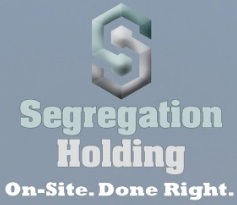What are the new tangible property regulations?
 Many of you know, and just as many don’t know, there are new tangible property regulations. The IRS has been working on these tangible property regulations over 4 years. They were finalized and enacted last January, 2014, just to be rescinded last fall. In effect, the accounting community raised he** with the IRS claiming “financial Armageddon” was coming if the law were actually applied. Go figure.
Many of you know, and just as many don’t know, there are new tangible property regulations. The IRS has been working on these tangible property regulations over 4 years. They were finalized and enacted last January, 2014, just to be rescinded last fall. In effect, the accounting community raised he** with the IRS claiming “financial Armageddon” was coming if the law were actually applied. Go figure.
So, implementing these new tangible property regulations has become a chore. Just ask your CPA or accountant! The better question to ask is, “how can I use these tangible property regulations to my advantage?” Let’s look at just a few areas…
Do the tangible property regulations apply to you?
- The final regulations apply to any taxpayer who pays any dollar amount to acquire, produce, or improve tangible real or personal property. These regulations apply to partnerships, LLCs, S corporations, C-corporations, and individuals filing a Form 1040 with Schedule C, E, or F. The final regulations affect you if you incur amounts to acquire, produce or improve tangible real or personal property in carrying on your trades or businesses. The rules are most significant for those who regularly incur large capital expenditures such as electric utilities, telecommunications companies, and businesses with substantial real estate holdings. The final regulations were effective for taxable years beginning on or after January 1, 2014.
When & how do you apply the final tangible property regulations?
Generally, the final tangible property regulations apply to taxable years beginning on or after January 1, 2014, or in certain circumstances, apply to costs paid or incurred in taxable years beginning on or after January 1, 2014. To make these elections, you should attach a statement for each election to your timely filed original federal tax return including any extension for the taxable year in which the amounts subject to the election are paid. Each statement should include your name, address, Taxpayer Identification Number, and a statement describing the election. For some elections, you will need to include a description of the property to which the election is applied. For example, if you qualify and desire to use the de minimis safe harbor election for qualifying amounts paid during your annual taxable year beginning January 1, 2014, you must file a statement with your timely filed original federal tax return for 2014.
When and how do you change a method of accounting to use the final regulations?
Generally, you receive automatic consent to change a method of accounting by completing and filing Form 3115, Application for Change in Accounting Method, and including it with your timely filed original federal tax return for the year of change. You also mail a duplicate copy of the Form 3115 to Ogden, Utah. The Form 3115 will identify the taxpayer, describe the methods that are being changed, identify the type of property involved in the change, and include a section 481(a) adjustment, if applicable. When cost segregation is applied, per IRS guidelines, this allows for all overpaid income taxes to carry forward into the current tax year automatically.
The section 481(a) adjustment takes into account how you treated certain expenditures in years before the effective date of the final regulations to avoid duplication or omission of amounts in your taxable income. For detailed instructions for filing applications for changes in methods of accounting under the tangible property regulations, see Rev. Proc. 2015-13, 2015-5 I.R.B. 419, and sections 6.37-6.40 and 10.11 of Rev. Proc. 2015-14, 2015-5 I.R.B. 450.
So, what should I do now?
Simply! Contact us here at Segregation Holding. We partner with CPAs to deliver the necessary engineering analysis for your CPA to apply to your taxes. Your tax credit or refund is just 30 days away from when we file Form 3115. Act today…don’t delay…it’s your money! By the way, your money is guaranteed to you by law. Segregation Holding commits to help you get it!



